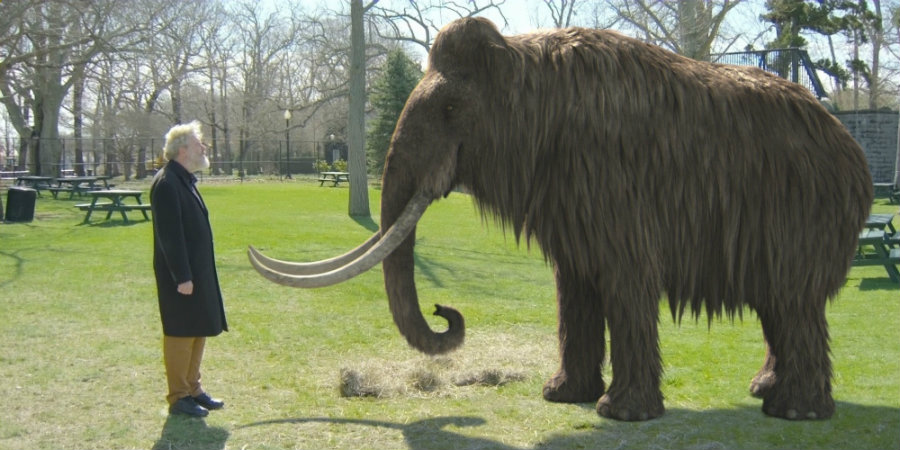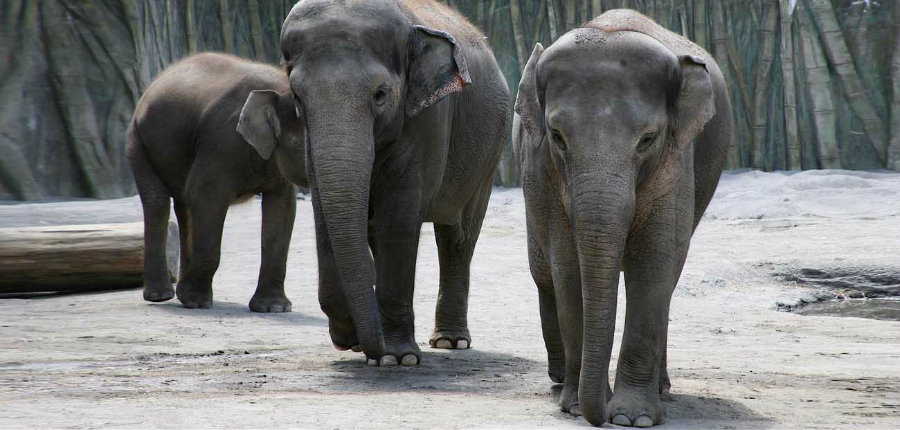Harvard University scientists say that they will bring a wooly mammoth back to life in just two years. Apparently, they can do so by using frozen DNA of a mammoth found in Arctic ice sheets, allowing them to create an embryo in lab settings.
The goal is to produce a hybrid between a mammoth and an Asian elephant. Researchers assure that it would be “more like an elephant with a number of mammoth traits.”

Mammoths will make a comeback
Led by Professor George Church, the team plans to recreate a mammoth’s DNA by using an Asian elephant as a base, mainly because this variety of elephants are closer relatives to the mammoth. The novel gene splicing technique, known as CRISPR/Cas9 was developed by Church and has been employed in labs since 2012.
The project started in 2015, having the mammoth DNA spliced enough times to resemble an elephant’s, going from 15 strings up to 45. Researchers are aiming toward altering the genes that basically help the elephants survive in cold environments. Some of these traits include smaller ears, increased subcutaneous fat deposits, and longer hair.
“If we really want to bring mammoths back to life, then we’re in luck, as far as DNA preservation goes. Some mammoths lived in places where their bones and carcasses were buried in permafrost, like being stuck in a freezer for 30,000-plus years,” wrote Beth Shapiro, from the University of California, in her book “How To Clone a Mammoth.”

CRISPR/Cas9 is perceived as a revolutionary DNA engineering process, which would allow altering the DNA of species that are nearing extinction, increasing their chance of survival. Elephants, for example, are an endangered species, but enabling them to obtain mammoth traits would enhance their potential for living in colder habitats. Researchers have acknowledged that it is basically impossible to obtain a creature that is a mammoth without any traces of other species.
But why on earth do we need mammoths?
Apparently, Chruch’s project is not for cloning a mammoth just because it is possible. There are two primary objectives, as he assured at the American Association for the Advancement of Science (AAAS) annual meeting in Boston. The first is to secure an alternative future life for the Asian elephant, which is an endangered species. The second is a potential solution to global warming.
Because mammoths would move around tons of snow as they move in large packs, this would allow cold air to come in and cool the ground. It would help prevent tundra permafrost from melting away and releasing greenhouse gasses. Also, mammoths would “knock down trees and help the grass grow,” according to Church.
In an initial set of trials, CRISPR/Cas9 has been tested in mice by performing an ex-vivo procedure, which has the embryo growing outside a female’s womb. This is to avoid putting an endangered Asian elephant specimen at risk. Professor Church believes that, within ten years, reverse genetic engineering will be much more common.

Wooly mammoths were scattered all over the world, being native to North America, Europe, Africa, and Asia until 4,500 years ago when they finally became extinct due to humans at the time hunting them down for their tusks and meat.
Now a feasible question would be whether it is “ethical” to try and bring back to life an extinct species. The main difference between such scenario and what the Harvard de-extinction team has brought to the table is that dinosaurs lived over 60 million years ago, while mammoths existed alongside humans, whereas the oldest usable DNA sample comes from a 43,000-year-old wooly mammoth.
Leaving ethics aside, a good deal of scientists believe that trying to resurrect a mammoth is a waste of time and resources, seeing that, according to the International Union for Conservation of Nature, there are over 20,000 endangered species living today, which could use some of the resources invested in bringing back the mammoth.
Even if it is labeled by many as a flamboyant project, Professor Church does not have regard for critics.
He remains firm by saying that “reanimation could help living animals by restoring lost genetic diversity. Ancient genes could make threatened species more tolerant of chemicals, heat, infection and drought. Just as a new vaccine can free up medical resources that would otherwise be spent on sick patients, reanimation may be able to help conservationists by giving them powerful new tools,” as reported by Quartz.
The other side of the issue is the possibility of repairing all the seemingly irreparable damage that humans have done to nature, in this case, the extinction of species due to insatiable hunting and foraging. Bringing back extinct species is seen by some, such as TED lecturer Stewart Brand, as a “moral obligation” to try and bring back the species that us humans have exterminated.
Source: International Business Times
